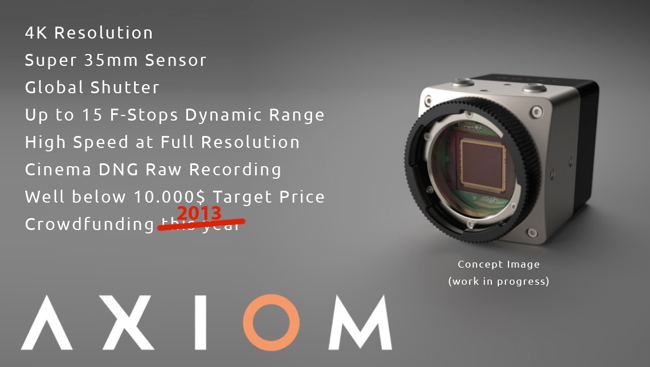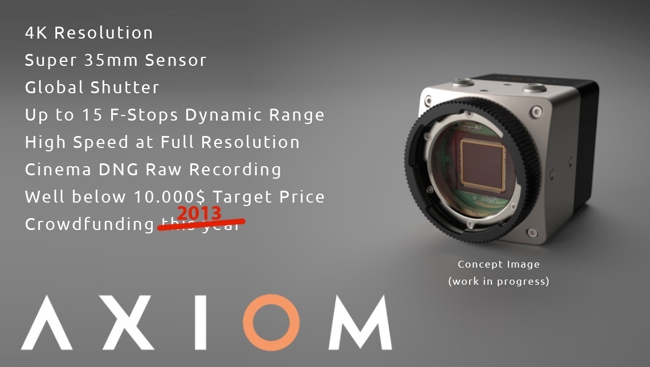
 Can you really make an open source camera?
Can you really make an open source camera?
Open Source software. Somehow, it makes sense: talented developers contribute to projects in their spare time and the result is often stunningly good software. So what about Open Source hardware? That's different, and it's far more difficult
It's easy to see why: hardware is made of stuff. You can design it on the same principles as open source software; but with Open Source hardware, you have to actually make it. And making it costs money, because you have to buy the components and raw materials, and someone has to, you know, make it. You don't have to make software - you just duplicate it.
So it is somewhat surprising to find that there really are Open Source hardware projects out there. And no, that doesn't mean you can miraculously duplicate circuit boards.
Arduino
Perhaps the best-known Open Source hardware project so far is Arduino, a hardware controller board with sensors and various I/O ports that can be easily used by educators, students and anyone that needs an accessible cross-platform device to base their creative ideas on. Here's an excerpt from Arduino's own FAQ which gives a good flavour for how it all works:
Why Arduino?
There are many other microcontrollers and microcontroller platforms available for physical computing. Parallax Basic Stamp, Netmedia's BX-24, Phidgets, MIT's Handyboard, and many others offer similar functionality. All of these tools take the messy details of microcontroller programming and wrap it up in an easy-to-use package. Arduino also simplifies the process of working with microcontrollers, but it offers some advantage for teachers, students, and interested amateurs over other systems:• Inexpensive - Arduino boards are relatively inexpensive compared to other microcontroller platforms. The least expensive version of the Arduino module can be assembled by hand, and even the pre-assembled Arduino modules cost less than $50
• Cross-platform - The Arduino software runs on Windows, Macintosh OSX, and Linux operating systems. Most microcontroller systems are limited to Windows.
• Simple, clear programming environment - The Arduino programming environment is easy-to-use for beginners, yet flexible enough for advanced users to take advantage of as well. For teachers, it's conveniently based on the Processing programming environment, so students learning to program in that environment will be familiar with the look and feel of Arduino
• Open source and extensible software- The Arduino software is published as open source tools, available for extension by experienced programmers. The language can be expanded through C++ libraries, and people wanting to understand the technical details can make the leap from Arduino to the AVR C programming language on which it's based. SImilarly, you can add AVR-C code directly into your Arduino programs if you want to.
• Open source and extensible hardware - The Arduino is based on Atmel's ATMEGA8 and ATMEGA168 microcontrollers. The plans for the modules are published under a Creative Commons license, so experienced circuit designers can make their own version of the module, extending it and improving it. Even relatively inexperienced users can build the breadboard version of the module in order to understand how it works and save money.
An Open Source Camera
Meanwhile, for over six years, Apertus has been working to create digital cinematography video cameras based on the same sort of principles.
It's not been without difficulty. The sorts of issues that are endemic to Open Source development have hampered the project from the start, as we can see in this very frank account from the Apertus website:
For 6 years Apertus has been a community-only driven project. People contributed because of personal interest and so the project evolved into several directions over time. But in the end it was anarchy, nobody had any responsibilities and while we had goals we had no means to guarantee we would really end up there. Parts of the project were stagnating because we could not find the people with the required skills.
All this could change, though. Following an obviously quite painful realisation that a project as complex as creating a high-end camera needs organisation - a company, effectively - to move forward, Apertus has announced that they are putting all the pieces in place to be able to manufacture the product. And, yes, it will be a business that will have to generate revenue, without losing sight, one hopes, of the original aims.
And the first product from the new "Organisation" will be the Axiom: a 4K camera that's able to take virtually any lens mount.
Kickstarter
Axiom will be funded from a Kickstarter campaign, which will kick-off sometime in 2013.
Update Apertus has asked us to point out that they have already stated that Kickstarter is not now their preferred option. If you want to read about their reasoning for this, it's all here.
It's probably pointless to go into more detail at this stage because everything about this is so speculative. It's also worth remembering that things are moving so quickly in the 4K large-sensor arena that there's a very high chance that this ambitious project will be blown out of the water by the dramatic and seemingly unstoppable drop in the price of other 4K devices.
But Apertus's ambitions seem credible. And with their genuinely different approach, it seems at least possible that they might have a hit on their hands, given suitable funding and all the winds in the right direction.
We wish them luck and will report on any developments that we hear about.
We're conducting an in-depth interview with Apertus which will appear in RedShark soon
Tags: Business


Comments